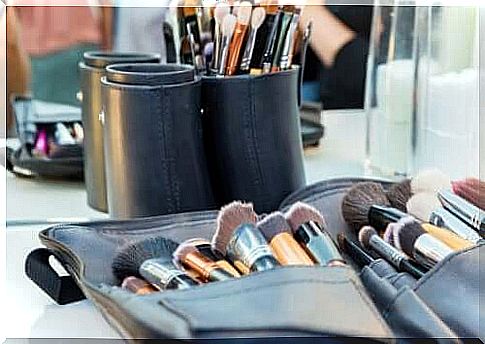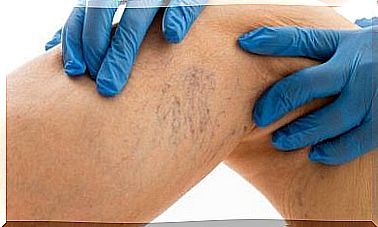Tips For Taking Care Of Your Makeup Kit

Your makeup kit can accumulate numerous bacteria that can cause various infections, especially on sponges, if you don’t clean them at least once a week. Based on evidence obtained in the studies carried out, it can be stated that makeup sponges harbor microorganisms such as E. coli and S. aureus.
It is estimated that a high percentage of utensils used daily for makeup contain a significant bacterial load. This was proven from a survey carried out by physicians at the Faculty of Life and Health Sciences at Aston University in Birmingham (UK).
Purpose of the study on the makeup case
The aim of the study was to analyze the type and extent of contamination in five cosmetic products for daily use, such as lipstick, mascara, eyeliner, lip gloss and makeup sponges.
Makeup sponges are among the best-selling cosmetic products in the world. The products that participated in the study were from different people and from different origins. To know their load of microorganisms, bacteriological cultures were carried out.

Evidence suggests that objects such as makeup brushes and sponges contain potentially infectious bacteria.
What information did the study provide about makeup kits?
The results of the study of makeup articles revealed the presence of bacteria in nine of the ten cosmetics tested. The bacteria in them can lead to skin infections and even generalized infections, especially if you use cosmetics in areas near your mouth and eyes. On the other hand, the danger increases if, for whatever reason, they end up getting into a skin wound.
Specifically, in all cosmetics bacteria of Staphylococcus aureus , Escherichia coli and Citrobacter freundii , microorganisms that constitute a health risk were found .
Types of Infection
Bacteria such as E. coli and S. aureus can infect wounds or find entryways through the skin, leading to an infection. Generally, the infections that can be caused are varied in nature.
The infection can be localized and mild or localized and more severe. In the case of people with weakened immune systems, it can even cause a generalized infection.
The bacterial load level is high in makeup sponges. The main reason for this significant bacterial load is poor hygiene. In a high percentage of cases, the analyzed sponges were never washed.
Furthermore, it should be taken into account that they are generally kept moist, which contributes to the proliferation of bacteria. For this reason, the sponge in your makeup case is more susceptible to being contaminated.

Tips for taking care of your makeup kit
Don’t forget that any sponge, be it facial cleanser or makeup, ends up being a source of bacteria. Therefore, try to keep them clean and, whenever possible, store them only after they are well dry.
Moisture is a breeding ground for bacteria deposited on the sponge in your makeup kit. When your skin comes into contact with products contaminated by bacteria and other pathogenic microorganisms, it is vulnerable to health problems.
For this reason, manufacturers ensure that both expiration dates and cleaning requirements for these types of cosmetic products are clear and clearly visible on the packaging. Therefore, when buying this type of product, observe the symbols that appear on the packaging.
European Union standards require strict compliance with hygiene standards in their manufacture. Therefore, in the specific case of E. coli , they establish the requirement that no presence of this bacterium be observed in newly manufactured cosmetic products.
Keep regular cleaning
In addition to checking the expiration date of cosmetic products, it is necessary to get into the habit of cleaning the sponges regularly to avoid the risk of bacterial contamination.









